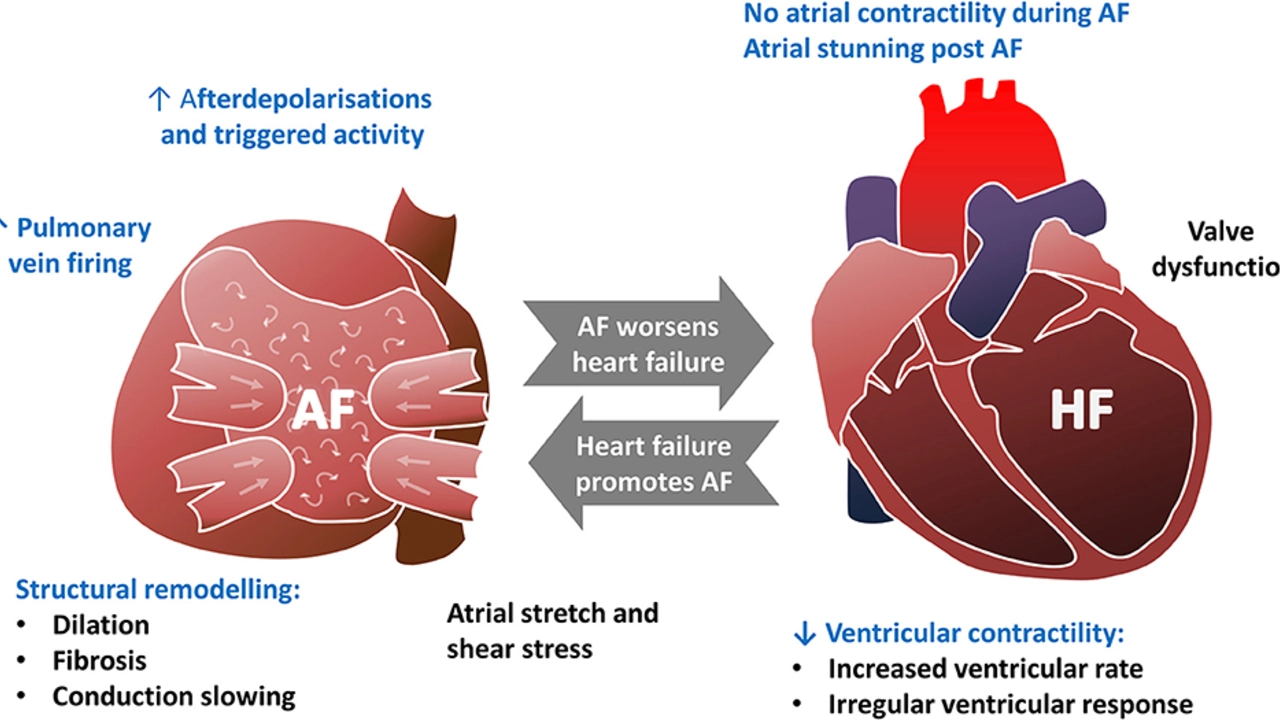Atrial Fibrillation and Smoking: The Dangers and How to Quit
 Jun, 26 2023
Jun, 26 2023
Understanding Atrial Fibrillation
Atrial fibrillation, also known as AFib or AF, is a type of irregular heartbeat or arrhythmia that affects millions of people worldwide. It occurs when the upper chambers of the heart, called the atria, beat chaotically and out of sync with the lower chambers, called the ventricles. This can lead to a variety of symptoms, such as fatigue, shortness of breath, and chest pain. It also increases the risk of stroke and heart failure, making it a serious condition that requires proper management.
Many factors can contribute to the development of atrial fibrillation, including age, family history, and other medical conditions such as high blood pressure and obesity. However, one of the most significant and preventable risk factors for AFib is smoking. In this article, we will discuss the dangers of smoking related to atrial fibrillation and provide tips on how to quit for a healthier heart.
The Connection Between Smoking and Atrial Fibrillation
Smoking is a well-known risk factor for various heart diseases, including atrial fibrillation. The chemicals in cigarette smoke can damage the heart's structure and function, leading to an increased likelihood of developing AFib. Additionally, smoking can cause inflammation and oxidative stress in the body, which may contribute to the development and progression of atrial fibrillation.
Several studies have shown a strong link between smoking and AFib. In fact, smokers have a higher risk of developing atrial fibrillation compared to nonsmokers. Furthermore, the risk increases with the number of cigarettes smoked per day and the duration of smoking.
How Smoking Increases the Risk of Stroke and Heart Failure
As mentioned earlier, atrial fibrillation increases the risk of stroke and heart failure. Smoking, in combination with AFib, can further increase this risk. The irregular heartbeat caused by AFib can lead to the formation of blood clots, which can travel to the brain and cause a stroke. Smoking, on the other hand, can damage the blood vessels and make them more prone to clot formation.
Similarly, heart failure occurs when the heart is unable to pump blood efficiently. Atrial fibrillation can strain the heart and reduce its pumping efficiency, while smoking can cause further damage to the heart muscle. Together, these factors can significantly increase the risk of heart failure in individuals with AFib who smoke.
Quitting Smoking: The First Step Towards a Healthier Heart
Quitting smoking is one of the best things you can do for your heart health, especially if you have atrial fibrillation. Not only will it reduce your risk of AFib-related complications, but it will also improve your overall cardiovascular health and lower your risk of other heart diseases.
Keep in mind that quitting smoking is a process, and it may take several attempts before you are successful. However, with determination and support, you can break free from this dangerous habit and significantly improve your heart health.
Creating a Quit Plan
Having a plan in place can increase your chances of successfully quitting smoking. Start by setting a quit date and informing your friends and family so they can support you throughout the process. Identify your smoking triggers and develop strategies to avoid or cope with them. For example, if you tend to smoke when you're stressed, try finding alternative stress-relief methods like exercise or deep breathing.
Also, consider using smoking cessation aids such as nicotine replacement therapy, prescription medications, or counseling. Speak with your healthcare provider to determine which options are best suited for your needs.
Managing Cravings and Withdrawal Symptoms
Cravings and withdrawal symptoms are common challenges faced by those trying to quit smoking. These symptoms may include irritability, anxiety, difficulty concentrating, and increased appetite. It's important to remember that these symptoms are temporary and will subside over time.
To manage cravings, try using nicotine replacement therapy or engaging in activities that can distract you, such as going for a walk or calling a friend. For withdrawal symptoms, consider using over-the-counter medications or prescription medications recommended by your healthcare provider.
Staying Smoke-Free for Life
Quitting smoking is a lifelong commitment. While it may be challenging at first, the benefits to your heart and overall health are well worth the effort. To stay smoke-free, continue to avoid triggers and seek support from friends, family, or support groups. Remember to celebrate your milestones and reward yourself for your progress.
By quitting smoking and managing your atrial fibrillation, you can significantly reduce your risk of stroke, heart failure, and other heart-related complications. Take the first step towards a healthier heart today and start your journey to a smoke-free life.
Arpit Sinojia
June 26, 2023 AT 19:59Kshitiz Dhakal
June 26, 2023 AT 21:21kris tanev
June 26, 2023 AT 22:22Mer Amour
June 27, 2023 AT 21:50Cosmas Opurum
June 28, 2023 AT 06:59